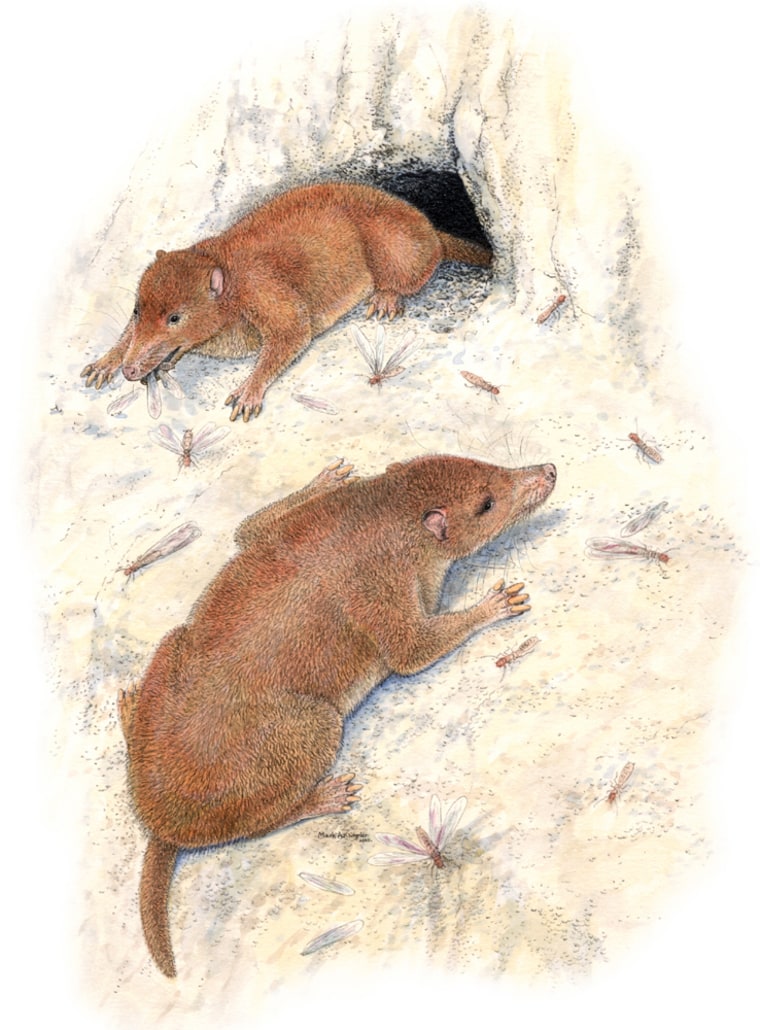Just as dinosaurs started getting really big 150 million years ago, a little rat-sized mammal scurried around eating termites, scientists reported Thursday.
They found the fossil of a completely new type of animal in Colorado, and said it apparently resembled an armadillo and would have eaten bugs.
But the fossil animal, named Fruitafossor windscheffelia, is not related to anything alive today. The discovery shows that anteaters, armadillos and other creatures that dig up insects evolved their specialized abilities several times during the history of the world.
This is known as convergent evolution.
Dental convergence
Zhe-Xi Luo and John Wible of the Carnegie Museum of Natural History in Pittsburgh said the mammal’s limbs and hollow teeth resembled those of some of today’s specialized termite-eaters, including aardvarks, anteaters and armadillos.
“The dental convergence of Fruitafossor to modern armadillos suggests its diet may include termites, other insects, invertebrates and even plants,” they wrote in Friday’s issue of the journal Science.
Termites and their close relatives — cockroaches — had evolved millions of years before Fruitafossor lived, they said.
Like anteaters, the Fruitafossor had tubelike teeth because it would have sucked in and swallowed its prey virtually whole, Luo and Wible found.
Its four-toed limbs suggested it scratched in the dirt.
Living with dinosaurs
Dated to the late Jurassic period, it would have lived alongside huge dinosaurs such as the brachiosaurus, stegosaurus and allosaurus.
The name comes from the town of Fruita, Colo., where the fossil was found, with “fossor” for the fossorial, or digging, specialization of the forelimbs.
“Windscheffeli is in honor of Wally Windscheffel, who discovered the holotype specimen,” the researchers added.
